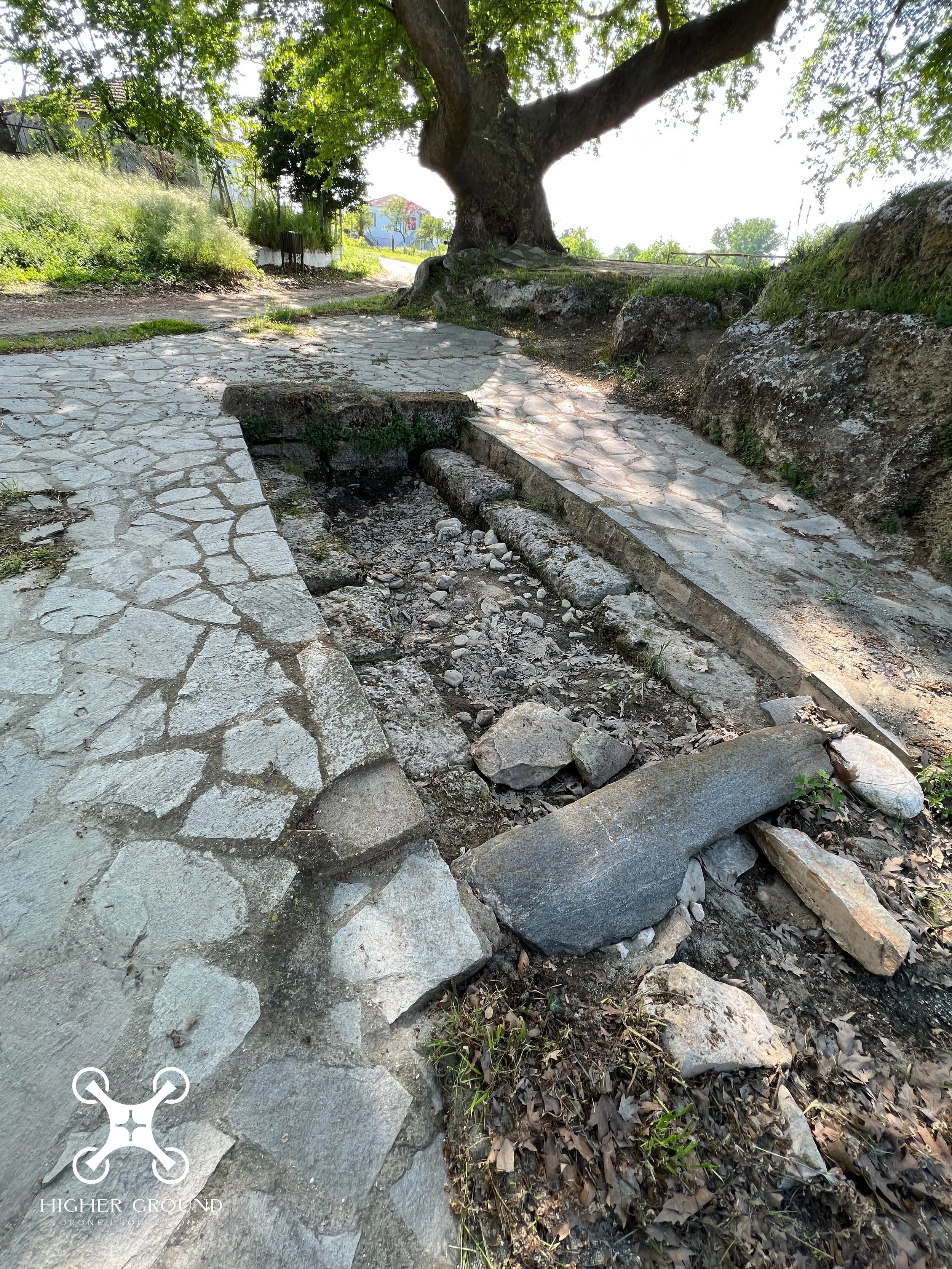Thessaloniki, Kavala, Philippi, Amphipolis & Apollonia
We drove along the coast line between Thessaloniki and Kavala this morning (very thankful the car was where we left it last night and still intact).
Kavala is the modern city that was the port of Neopolis at the time St Paul came to Macedonia, after having a vision of a Macedonian man asking him to bring the gospel to them (Acts 16:8-10). There is a church near the harbor dedicated to St Paul’s landing there - significant in our time because it is the first time there was Christian missionary work in Europe. We included some pictures of a Roman aqueduct right in the middle of the city, but the aqueduct was not there in 50 AD when Paul arrived.
The driving and the parking - worse than Thessaloniki! If ever again we go, we park outside the city and take a cab!
Just outside of Kavala on the way to the archeological site of Philippi there are a couple of stretches of the ancient Roman road the Via Egnatia that are still visible. We scouted them out with the help of coordinates from some experts who were willing to share their information. This is the road Paul and company would have walked from the port of Neopolis to Philippi - a very important city in that day. The via Egnatia was constructed in the second century BC and connected Rome to what we now know as Istanbul. This road made much of Paul’s travels in Greece possible.
We visited the ruins of Philippi, where Paul was briefly imprisoned with Silas. The most likely spot for the prison has an active excavation underway right now - we saw the archeology team brushing dirt from skeletal remains. The site holds a large Roman theater, a section of the via Egnatia, a large stone paved agora and over the top the Roman forum. There are a number of later basilicas at Philippi (5th and 6th century AD) including an octagonal basilica with well preserved marble mosaic floors and a cross shaped baptistery. The octagonal church has a founding inscription by the Bishop of Philippi, Porphyrios, on the mosaic floor of the house of prayer, decorated with symbolic scenes of birds, trees, and geometric motifs, and it informs us that the church was dedicated to the Apostle Paul, and founded in 313-343 AD. At the end of the 4th century.
Outside of the site at Philippi is the proposed site on the river where Paul and his group found a Jewish place of prayer and told the gospel to religious women meeting there, including Lydia of Thyatira Acts 16:13-16. There is a lovely, peaceful memorial built over the river there and a Byzantine style chapel dedicated to Lydia. The painting around the upper rim of the church tell the story of Paul’s time there.
Next, Paul traveled through Amphipolis and Apollonia (stops on the via Egnatia) on his way to Thessaloniki, and that is the direction we took as well. Amphipolis has the remains of an ancient Roman wooden bridge dating to the 6th century BC - petrified wooded posts and beams. This bridge is mentioned by an ancient historian as being crucial in the 442BC battle at Amphipolis between the Spartans and the Athenians.
Near Amphipolis are important Macedonian tombs. The Kasta tomb is not yet open to the public (although we did make an aborted attempt to go down the rutted dirt road that leads to the huge burial mound - clearly not ready for tourism!).
Also near by is the Lion of Amphipolis - an enormous funeral monument that was originally set atop the Kasta tomb on a pedestal 4 times the height of the one in the picture.
At Apollonia there is little to see except a plaque over some stones that various writers say are stones from the via Egnatia, or stones Paul stood on to preach. There is also the rather creepy remains of a Roman bath house!
We have one more night in Thessaloniki and then on to Athens tomorrow where Margery can’t wait to turn in this dodgy little car and switch to mass transit.
One more thing…. Food. So so so good. Tonight food was the best so far - pictures below. God Bless, PB and Marge














































































